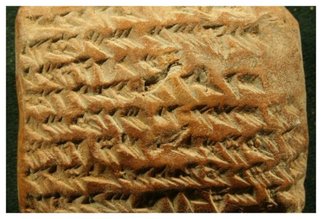
The earliest known examples of mathematical and geometric astronomy have been identified in a series of ancient Babylonian cuneiform tablets.
An analysis of the tablets, reported in the journal Science, reveals ancient Babylonians were able to calculate the position of Jupiter using geometric techniques previously believed to have been first used some 1,400 years later in 14th century Europe.
"These texts are the earliest evidence we have from antiquity of mathematical astronomy," said the study's author Dr Mathieu Ossendrijver, a historian on Babylonian astronomy with the Humboldt University in Berlin. "It describes Jupiter's velocity across the sky and how that changes with time."
The tablets, which are housed at the British Museum, are believed to have been unearthed from an archaeological dig in what is now modern day Iraq sometime in the 1800s. The almost completely intact tablets are thought to have been written in Babylon between 350 and 50 BCE.
The tablets are part of a larger collection of 450 astronomy tablets from Babylon and Uruk containing celestial data arranged in rows and columns, together with instructions.
The rest of this article can be found here.
 RSS Feed
RSS Feed